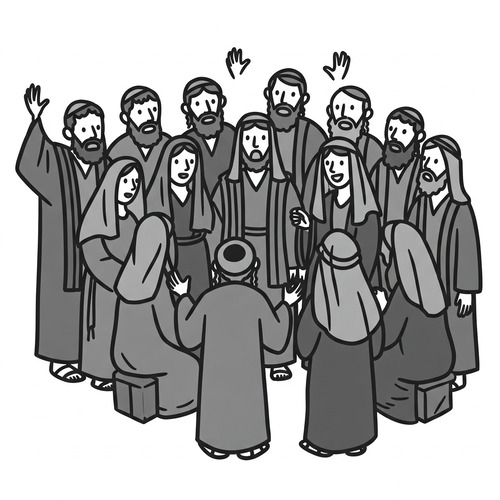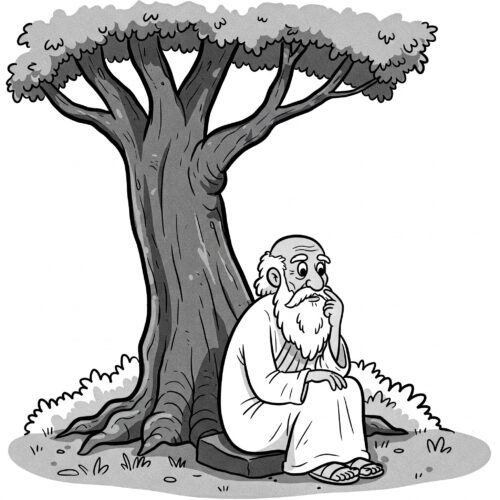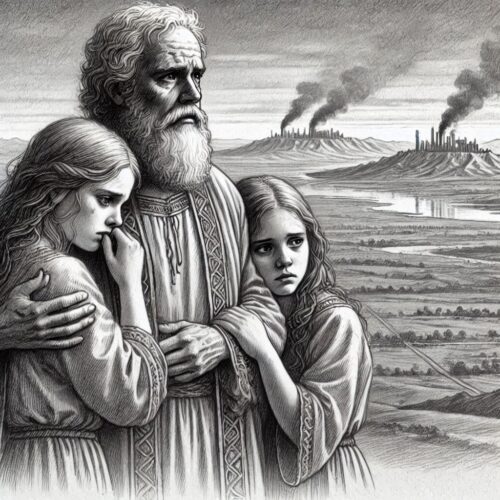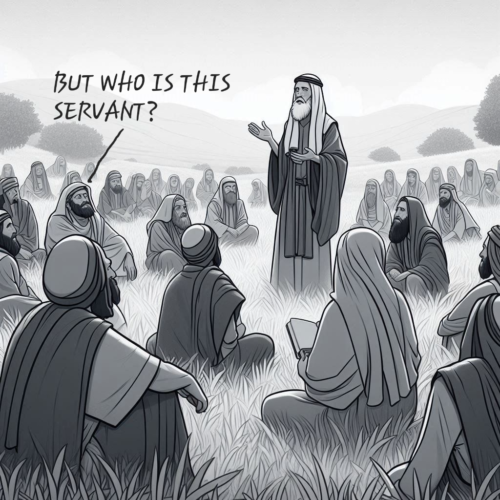Cursing of the Fig Tree: Reformed Insights You May Have Missed
It’s a puzzling moment in the Gospels. Jesus, hungry and approaching a leafy fig tree, finds no fruit and promptly curses it to never bear fruit again. By the next day, the disciples marvel to find it withered from the roots.
The incident, recorded in Mark 11:12-14, 20-25 and Matthew 21:18-22, has troubled many readers. Why would Jesus, the embodiment of grace and compassion, curse a tree for not bearing fruit—especially when, as Mark explicitly notes, “it was not the season for figs”?
Is this simply a display of divine frustration? A momentary lapse in Jesus’ patience? Or is there something more to it, perhaps, than meets the eye?
THE FIG TREE IN CONTEXT: NOT AN ISOLATED INCIDENT
To understand the event properly, we must first appreciate its context. In Mark’s Gospel, the fig tree incident actually forms what scholars call a “Markan sandwich”—a literary technique where one story is split in two parts with another story inserted in the middle:
- Jesus curses the fig tree (Mark 11:12-14)
- Jesus cleanses the temple (Mark 11:15-19)
- The disciples discover the withered fig tree (Mark 11:20-25)
This arrangement is no accident. As Reformed theologian RC Sproul observes, “Mark’s ‘sandwich’ technique invites the reader to interpret these events in light of each other. The fig tree and the temple cleansing are theologically connected.”
THE FIG TREE AS ISRAEL: AN ANCIENT SYMBOL
Throughout the Old Testament, the fig tree frequently appears as a symbol for Israel—as in Hosea 9:10, Jeremiah 8:13 and Joel 1:7.
John Calvin, the foundational Reformed theologian, writes in his commentary: “Christ’s curse of the fig tree was not the expression of a private feeling, but a symbolic action meant to instruct. Just as the prophets of old would enact their prophecies, so Christ enacted this judgment upon a tree that represented Israel’s spiritual condition.”
The fig tree’s abundant leaves (the appearance of vitality) but absence of fruit perfectly symbolised Israel’s religious system in Jesus’ day—particularly the temple worship that had become increasingly disconnected from the heart-level righteousness God desired.
Temple Cleansing: The Heart of the Sandwich
Between these fig tree bookends stands Jesus’ dramatic cleansing of the temple. He overturns tables, drives out merchants, and declares: “Is it not written, ‘My house shall be called a house of prayer for all the nations’? But you have made it a den of robbers” (Mark 11:17).
Michael Horton explains the connection: “The temple, like the fig tree, gave every outward appearance of vitality and fruitfulness. Its courts were filled with activity, sacrifices, and religious observance. Yet beneath this veneer of religiosity was a spiritual barrenness that grieved the heart of God.”
This connection becomes even more striking when we remember Jesus’ final approach to Jerusalem included His lament: “How often would I have gathered your children together as a hen gathers her brood under her wings, and you were not willing! See, your house is left to you desolate” (Matthew 23:37-38).
The cursed fig tree and cleansed temple together form a powerful enacted parable about judgement upon fruitless religion.
COVENANT THEOLOGY: THE BIGGER PICTURE
Reformed theology’s covenant framework offers particular insight into this event. O Palmer Robertson, in his seminal work The Christ of the Covenants, suggests Jesus’ actions during Passion Week repeatedly signal the transition from old covenant to new covenant realities.
The temple system, established under the old covenant as the dwelling place of God and centre of Israel’s worship, was about to be superseded. In just days, Jesus would establish the new covenant in His blood, rendering the temple system obsolete.
Herman Bavinck writes: “The withered fig tree stands as a solemn warning of covenant judgement. Israel, as God’s covenant people, had been granted every spiritual advantage—‘the adoption, the glory, the covenants, the giving of the law, the worship, and the promises’ (Romans 9:4). Yet they produced leaves without fruit, religion without righteousness.”
This covenant perspective helps us understand Jesus’ seemingly harsh action not as petulance but as profound prophetic symbolism. The fig tree, like the temple, represented an old order that was passing away.
DIVINE AUTHORITY DISPLAYED
Jesus’ power to wither the fig tree with a word demonstrated His divine authority over creation. As Louis Berkhof notes in his Systematic Theology, this miracle, unlike Jesus’ healings and restorations, was an act of judgement that revealed His divine prerogative.
“Christ’s authority to judge is inseparable from His role as covenant mediator,” writes Sinclair Ferguson. “In cursing the fig tree, Jesus demonstrates that He is not merely a reformer of religion but the Lord who evaluates and judges religious institutions according to His perfect standard.”
Cornelius Van Til further observes this miracle uniquely reveals the ethical dimensions of Christ’s power. Unlike many miracles that primarily demonstrate compassion, this one emphasises judgement upon fruitlessness despite divine patience and provision.
CURSING OF THE FIG TREE: BEYOND JUDGEMENT TO HOPE
The cursing of the fig tree, when seen with Reformed eyes, reveals far more than a puzzling moment of frustration. It’s a powerful enacted parable about covenant, judgement, and the transition from old to new realities in God’s redemptive plan.
Just as Jesus didn’t merely condemn the temple system but established a new and better way to approach God, the cursed fig tree points beyond judgement to hope. The old fruitless systems would wither, making way for authentic fruit-bearing through union with Christ—the true vine who enables His branches to bear much fruit (John 15:1-8).
As we contemplate this often-misunderstood miracle, we’re invited to look beyond the surface to the profound theological truths Reformed scholars have uncovered in this rich text. The withered fig tree isn’t merely a curiosity but a powerful object lesson with enduring significance for all who seek to bear authentic spiritual fruit.
CURSING OF THE FIG TREE: RELATED FAQs
Why did Jesus curse the fig tree when it wasn’t even the season for figs? While Mark notes it wasn’t fig season, experts explain that Palestinian fig trees typically produced early edible buds called taqsh before full leaves appeared. As Tim Keller points out, “A leafy tree without these early fruit buds was making a false promise—it signalled fruit but offered none, perfectly symbolising religious hypocrisy.” Jesus wasn’t being unreasonable; rather, the tree’s misleading appearance made it an ideal prophetic object lesson about false religious appearances.
- How does the cursing of the fig tree relate to Jesus’ teaching on prayer that follows? Kevin DeYoung observes Jesus uses this moment to teach about faith-filled prayer, telling disciples they could move mountains through believing prayer. “Jesus isn’t offering a formula for manipulating God,” DeYoung writes, “but rather showing that authentic faith—the opposite of the fruitless religion just condemned—results in powerful communion with God.” The fig tree incident becomes a contrasting backdrop: fruitless religion versus mountain-moving faith that bears actual spiritual fruit.
- Does this passage mean God will judge churches that lack visible “success” or numerical growth? Joel Beeke, drawing on Puritan insights, cautions against simplistic metrics: “The Puritans distinguished between faithful fruitfulness and worldly success—God’s evaluation concerns heart religion and faithfulness to covenant obligations, not numbers or buildings.” The judgement falls not on lack of visible success but on religious hypocrisy—maintaining appearances while lacking authentic spiritual reality. A small but faithful congregation bearing the fruits of genuine repentance, faith, and love isn’t under the condemnation portrayed in the fig tree incident.
How do we reconcile the seemingly destructive act of cursing the tree with Jesus’ character of grace? Tim Keller addresses the tension by noting that “Jesus’ love and judgement aren’t contradictory but complementary—His love for true worship necessitates judgement on false religion that misleads people away from God.” The cursing demonstrates Jesus’ commitment to truth and authentic relationship with God, not capriciousness. As Keller further explains, “Jesus’ harshest words were always reserved for religious hypocrisy precisely because it inoculates people against genuine faith.”
- Could the fig tree represent individual believers rather than just Israel as a nation? Kevin DeYoung suggests a careful application: “While the primary symbolism targets Israel’s religious system, every believer should examine whether their life displays merely leaves (religious activities) or actual fruit (Christlike character).” The warning applies institutionally and individually—we can participate in religious activities while our hearts remain far from God. DeYoung emphasises that “the authentic Christian life manifests not just the appearance of godliness but its actual power.”
- What’s the significance of the disciples noticing the tree was withered “from the roots”? Joel Beeke draws on Reformed theology to explain: “When something is judged at the root level, it signifies comprehensive, irreversible judgement—not merely surface-level discipline but fundamental condemnation of the entire system.” This detail reinforces Jesus wasn’t merely calling for reform of temple practices but pronouncing judgement on the entire religious system. The old covenant system would not be merely pruned but replaced entirely by the new covenant in Christ’s blood.
How should this passage affect our understanding of Christian fruitfulness today? Joel Beeke emphasises the Puritan concern for “heart religion” over externals: “True fruitfulness flows from union with Christ and manifests in both personal holiness and love toward others—not merely religious activities or knowledge.” Authentic fruit comes not through religious effort but through abiding in Christ—this is why Jesus transitions from the withered tree to teaching about prayer, showing the pathway to genuine fruitfulness.
CURSING OF THE FIG TREE: OUR RELATED POSTS
Editor's Pick

Intelligent Design: Is It A God of the Gaps Argument?
The debate surrounding Intelligent Design (ID) and its place in science has sparked intense discussion in both scientific and theological [...]

Some Standing Here Will Not See Death: What Did Jesus Mean?
Jesus’ words leap off the page with startling immediacy: "Truly I tell you, some standing here will not taste death [...]

Multiple Spirit Outpourings in Acts: How Are These Significant?
MULTIPLE SPIRIT OUTPOURINGS IN ACTS: Ever wondered why the Book of Acts reports several dramatic outpourings of the Holy Spirit [...]

Failing the Math Test: Darwinism’s Wait Time Problem
In the grand narrative of origins, evolutionary theory has long been presented as an unassailable scientific truth. Textbooks, documentaries, and [...]

Blueprints of Life: Why Cellular Precision Demands a Designer
In the microscopic world of the cell, an intricate ballet unfolds every moment of every day. Molecules move with purpose, [...]
Too Perfect to Be Random: The Giraffe’s Remarkable Design
The giraffe is one of nature's most striking marvels—a creature whose distinctive features have captivated human imagination for centuries. Yet [...]
The Woodpecker’s Design: How Nature’s Headbanger Defies Evolution
Imagine a bird that slams its head against solid wood 20 times per second, enduring impacts of 1,200 G-forces—the force [...]
The Ear’s Intricate Design: Too Complex for Random Chance
The Ear's Intricate Design: When we listen to our favourite song, hear a loved one's voice, or notice the warning [...]
The Euthyphro Dilemma: Did God Invent Morality or Discover It?
A Biblical Creationist Answer to the 2400-Year-Old Question The Euthyphro Dilemma has challenged folks for over 2,400 years. First posed [...]
Outdo One Another in Showing Honour: What Does It Really Mean?
“Love one another with brotherly affection. Outdo one another in showing honour.” Paul’s instructions in Romans 12:10 present us with [...]
SUPPORT US:
Feel the Holy Spirit's gentle nudge to partner with us?
Donate Online:
Account Name: TRUTHS TO DIE FOR FOUNDATION
Account Number: 10243565459
Bank IFSC: IDFB0043391
Bank Name: IDFC FIRST BANK











